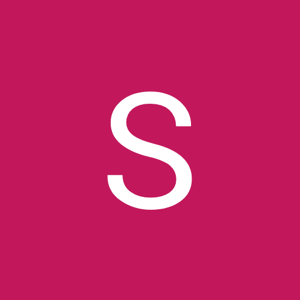The Middle East and Africa (MEA) breast implants market is witnessing steady growth, driven by increasing aesthetic awareness, rising disposable income, and advancements in cosmetic surgery technologies. Breast augmentation remains one of the most sought-after cosmetic procedures in the region, with a growing number of women opting for implants to enhance their appearance.
The market is influenced by factors such as medical tourism, the expansion of specialized clinics, and the availability of innovative implant materials. However, cultural perceptions, regulatory challenges, and economic disparities across the region also play a significant role in shaping market dynamics.
The breast implants market is expected to witness market growth at a rate of 8.5% in the forecast period of 2021 to 2028. Data Bridge Market Research report on the breast implants market provides analysis and insights regarding the various factors expected to be prevalent throughout the forecast period while impacting the market’s growth.
Discover the latest trends, growth opportunities, and strategic insights in our comprehensive Middle East and Africa Breast Implants Market report. Download Full Report: https://www.databridgemarketresearch.com/reports/middle-east-and-africa-breast-implants-market
Market Size
The MEA breast implants market has shown consistent expansion in recent years. According to industry reports, the market was valued at approximately USD 120 million in 2023 and is projected to grow at a compound annual growth rate (CAGR) of 6-8% over the next five years.
Countries like South Africa, Saudi Arabia, the UAE, and Egypt are leading the demand due to their well-established healthcare infrastructure and increasing acceptance of cosmetic procedures. The UAE, in particular, has emerged as a hub for medical tourism, attracting patients from neighboring countries seeking high-quality cosmetic surgeries.
Market Share
The MEA breast implants market is dominated by a mix of global and regional players. Key manufacturers include:
Allergan (AbbVie Inc.)
Mentor Worldwide LLC (Johnson & Johnson)
Sientra Inc.
GC Aesthetics
POLYTECH Health & Aesthetics
Silicone implants hold the largest market share due to their natural feel and durability, while saline implants remain a cost-effective alternative. The gummy bear (form-stable) implants are also gaining popularity for their safety and long-lasting results.
Geographically, the GCC countries (UAE, Saudi Arabia, Qatar, and Kuwait) account for the highest revenue share, thanks to their advanced medical facilities and high spending power. South Africa follows closely, driven by a growing middle-class population and increasing beauty consciousness.
Market Opportunities and Challenges
Opportunities
Medical Tourism Boom – Countries like the UAE, Turkey, and South Africa are attracting international patients with affordable and high-quality cosmetic surgery options.
Technological Advancements – Innovations in implant materials, 3D imaging for pre-surgical planning, and minimally invasive techniques are enhancing patient outcomes.
Rising Female Workforce Participation – Increasing financial independence among women is driving demand for aesthetic enhancements.
Growing Awareness Through Social Media – Influencers and celebrities openly discussing cosmetic procedures are reducing stigma and encouraging more women to consider breast augmentation.
Challenges
Regulatory Hurdles – Strict approval processes for new implant technologies can delay market entry.
Cultural and Religious Factors – In some conservative regions, cosmetic surgeries may still face social resistance.
High Costs – Premium implants and surgical procedures remain unaffordable for a large segment of the population.
Risk of Complications – Despite advancements, issues like capsular contracture and implant ruptures can deter potential patients.
Market Demand
The demand for breast implants in the MEA region is fueled by:
Aesthetic Enhancements – Women seeking improved body contours and confidence.
Reconstructive Surgeries – Rising breast cancer cases leading to post-mastectomy reconstruction.
Minimally Invasive Options – Preference for procedures with shorter recovery times.
Young women (aged 20-40) represent the largest demographic opting for breast augmentation, while older women (above 40) are increasingly seeking revision surgeries or replacements for older implants.
Market Trends
Shift Towards Natural-Looking Results – Patients are moving away from overly augmented looks, favoring subtle and proportionate enhancements.
Rise of Fat Transfer Procedures – Some women prefer autologous fat grafting as an alternative to traditional implants.
Customized Implant Solutions – 3D simulations allow surgeons to tailor implant size and shape to individual body types.
Focus on Safety and Longevity – Manufacturers are developing highly cohesive silicone gels and nano-textured surfaces to reduce complications.
Male Breast Reduction Surgeries – Increasing cases of gynecomastia are driving demand for male breast reduction procedures in the region.
Conclusion
The Middle East and Africa breast implants market is poised for continued growth, supported by rising beauty consciousness, medical tourism, and technological advancements. While challenges like regulatory barriers and high costs persist, opportunities in emerging markets and innovative implant technologies offer significant potential.
As societal acceptance of cosmetic surgeries increases and healthcare infrastructure improves, the MEA region is set to become a key player in the global breast implants industry. Stakeholders, including manufacturers, clinics, and surgeons, must focus on patient safety, affordability, and education to sustain long-term growth.
Contact Us:
Data Bridge Market Research
US: +1 614 591 3140
UK: +44 845 154 9652
APAC : +653 1251 975
Email:- corporatesales@databridgemarketresearch.com


Write a comment ...